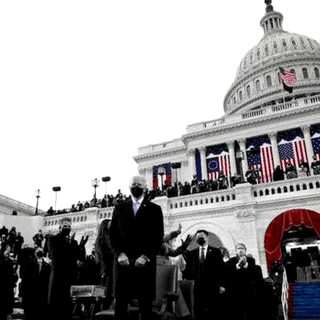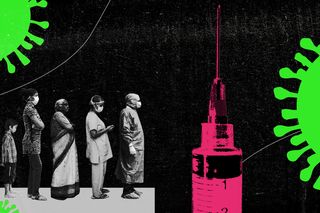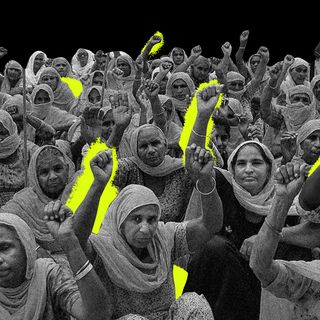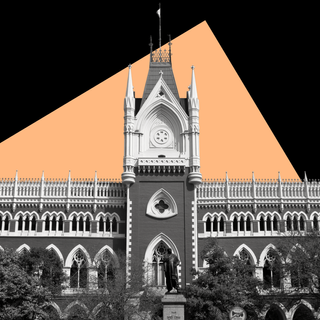
How Do We Decide Who Has First Dibs on the Covid Vaccines?
The question is uniquely important to India, where the government has agreed to subsidize only the first round of vaccine doses.

India launched one of the world’s biggest vaccination drives on Jan. 16, becoming the first major developing country to start widespread inoculation against the novel coronavirus. The country’s stated goal is to vaccinate 30 crore people by August, which will be implemented in a multi-phase process. First, 1 crore government and private healthcare workers will be given priority; then, 2 crore frontline workers (including the police, civil defense, and municipal workers), and then, the remaining 27 crore — people older than 50 and those with comorbidities. The vaccine for the first 3 crore, the government said, will be administered free of cost across the country. The question then is what happens to the rest of the population.
The Covid19 pandemic has worsened inequality in India, where 63 million people are pushed into poverty every year due to healthcare costs, according to Oxfam India. The pandemic is set to push 40 crore workers in the informal economy further into poverty, making the road to pandemic recovery a health and human rights issue for a majority of the country’s population. Because of India’s unique demographic and worsening economic inequality, universal free access to the vaccine is the need of the hour, say the country’s leading bioethicists.
However, the government has not yet come out with any guarantee for universal free access for everyone else. “The Union government has repeatedly made statements that the government will only provide a certain number of vaccines free of charge, and then either the state government does it or it has to go in the market,” says Amar Jesani, bioethicist, and editor of the Indian Journal of Medical Ethics. While states such as Bihar, West Bengal, and Tamil Nadu have promised free vaccination across the board, the logistics of procurement and funding remain obscure, unexplained. “It’s a mockery of human values,” Jesani says.
People living in low-income areas who may not be able to afford the vaccine, or those living in remote, digitally unconnected areas where vaccine distribution may not reach, are particularly vulnerable unless the government makes a commitment to inoculate them free of cost. India has numerous localities wherein washing hands, wearing masks, and keeping social distance are impossible due to crowded homes and lack of sanitation facilities. “People living in these localities should be high on the priority list because the public health possibility of them getting the infection a second time is highly probable,” Jesanisays. But since we don’t know who the fifth, sixth, seventh priority group is, “there is a possibility a large number of poor people will be left out.”
Related on The Swaddle:
Effective Covid Vaccine Will Be Meaningless in India Without a Mass Immunization Strategy
Who gets prioritized for the vaccine first is a question bioethicists, medical organizations, and governments have been trying to answer for months in the Covid19 pandemic. In India, however, deciding a prioritization model unique to the population is of particular importance due to the affordability of the vaccine. It will play an important role not just in who gets vaccinated first but whether many low-income communities will be able to get vaccinated at all.
Another issue that compounds this problem is the threat of vaccine doses being launched in the private sector market, bioethicist Anant Bhan says.
Jesani agrees. “It’s a dangerous policy decision the government has taken, showing insensitivity toward the people who will not be able to buy the vaccine from the private market,” he says. This concern is proving real with Serum Institute of India’s CEO Adar Poonawalla admitting he’s looking to launch the vaccine into the private market, once SII gets permission, and charge Rs. 1,000 per dose. SII is currently selling vaccine doses to the government at a “special price” of Rs. 200 for the first 100 million doses. The moment the vaccine hits the private market, the country’s supply runs the risk of skewed depletion as people who can afford it will buy it, while large swathes of the population will be unable to do so.
“There is absolutely no problem in prioritizing those people who are more at risk of contracting Covid19,” Jesani says, adding the model that prioritizes frontline workers follows a widely accepted model of ethical reciprocity. “If a certain group of people is providing a high level of care at high risk, then society has a reciprocal obligation to ensure they’re taken care of,” he says.
The ethical debate becomes complicated when we move to the second-priority group — the elderly. Several high-profile health organizations around the world have recommended protecting the elderly, and those with comorbidities first, as a way to reduce the mortality risk they face with Covid19. “Elderly people may not be working high-risk jobs, but Covid19 is causing high mortality among them. … It’s the principle of providing protection to them,” Jesani says.
This model, however, is at odds with the goal of reducing the rate of infection, which is facilitated by a predominantly younger and working population. “Allocating vaccines to those most responsible for the transmission of Covid19 may confer more benefit to the population at large,” a paper published by the American Journal of Medicine states. It’s the path chosen by Indonesia — a country whose economy was severely impacted by the Covid19 pandemic. Indonesia has decided to go against popular recommendations issued by the likes of the U.S. Centers for Disease Control and the World Health Organization, instead choosing to inoculate its 18 to 59 age group of working people, as an initiative to jumpstart the economy.
This approach also has indirect protection benefits for more at-risk groups, especially in India. “As the economy starts coming into normalcy, there is more risk of old people contracting an infection from the young people going out. There is a society’s obligation to help them from the threat,” Jesani says. This can be done by protecting the elderly or indirectly protecting them by protecting the young.
Either way, the vulnerability of the individual in the Covid19 pandemic is at odds with the vulnerability of the economy, and choosing which one to prioritize is a decision the Indian government has taken without any transparency.
While on paper, the current prioritization model seems to fulfill basic ethical principles, Bhan says the problem is that we have no clue about how the government arrived at it. “What is most important is having a clear rationale you use, and why you think it’s the best approach. How did we get there?” Bhan asks. Although the government, in August 2020, had created a National Expert Group on Vaccine Administration for COVID-19 (NEGVAC) to determine who gets the vaccine, no records of its meetings have been released to date. In response to a recent Right to Information Act application, the Union Ministry admitted it couldn’t locate these records.
Related on The Swaddle:
Waiting For a Vaccine Cannot be Our Pandemic Response Strategy
“We have a list, and it seems to be a good list, but maybe we don’t have a rationale,” Bhan says. This will limit our understanding of how to handle future pandemics and how to help policymakers deal with the national health tragedies that experts already predict will multiply from here on. Since the whole vaccine prioritization discussion has been shrouded in suspicion, lack of any guarantees, and possibly politically motivated distribution (such as sending vaccine doses free of cost to neighboring countries for ‘goodwill’), bioethicists are worried about what’s to come, and whose health the government may be unwilling to safeguard.
The main concern here, Bhan reiterates, is equity. “If we don’t know how long the government is going to subsidize the vaccine, what happens beyond that?”
The administration’s inability to provide a universal free access guarantee not only keeps a majority of the country in the dark but can also induce panic-buying by the more privileged in society once the vaccine is available to buy, putting even more pressure on vaccine production. These concerns exist on top of vaccine efficacy and distribution concerns the country is already grappling with, making the next few months fraught with necessary policy decisions that can change the course of India’s response to Covid19.
At the end of the day, there may never be a “perfect” prioritization model, and Jesani admits that vaccinating a country of 1.3 billion people is a “massive organizational exercise” that makes it impossible to prioritize everyone at the same time. But the need of the hour is a guarantee.
“It’s not true that they have a lack of money. Nobody is going to believe they don’t have money when the government is constructing buildings and temples and statues.” Jesani adds, “I don’t mind it getting it after six months. But I want the promise that I’ll get it. Is everybody a priority or not?”
Rajvi Desai is The Swaddle's Culture Editor. After graduating from NYU as a Journalism and Politics major, she covered breaking news and politics in New York City, and dabbled in design and entertainment journalism. Back in the homeland, she's interested in tackling beauty, sports, politics and human rights in her gender-focused writing, while also co-managing The Swaddle Team's podcast, Respectfully Disagree.
Related


For Women at the Farmers’ Protests in Delhi, the Farming Laws Aren’t the Only Issue
